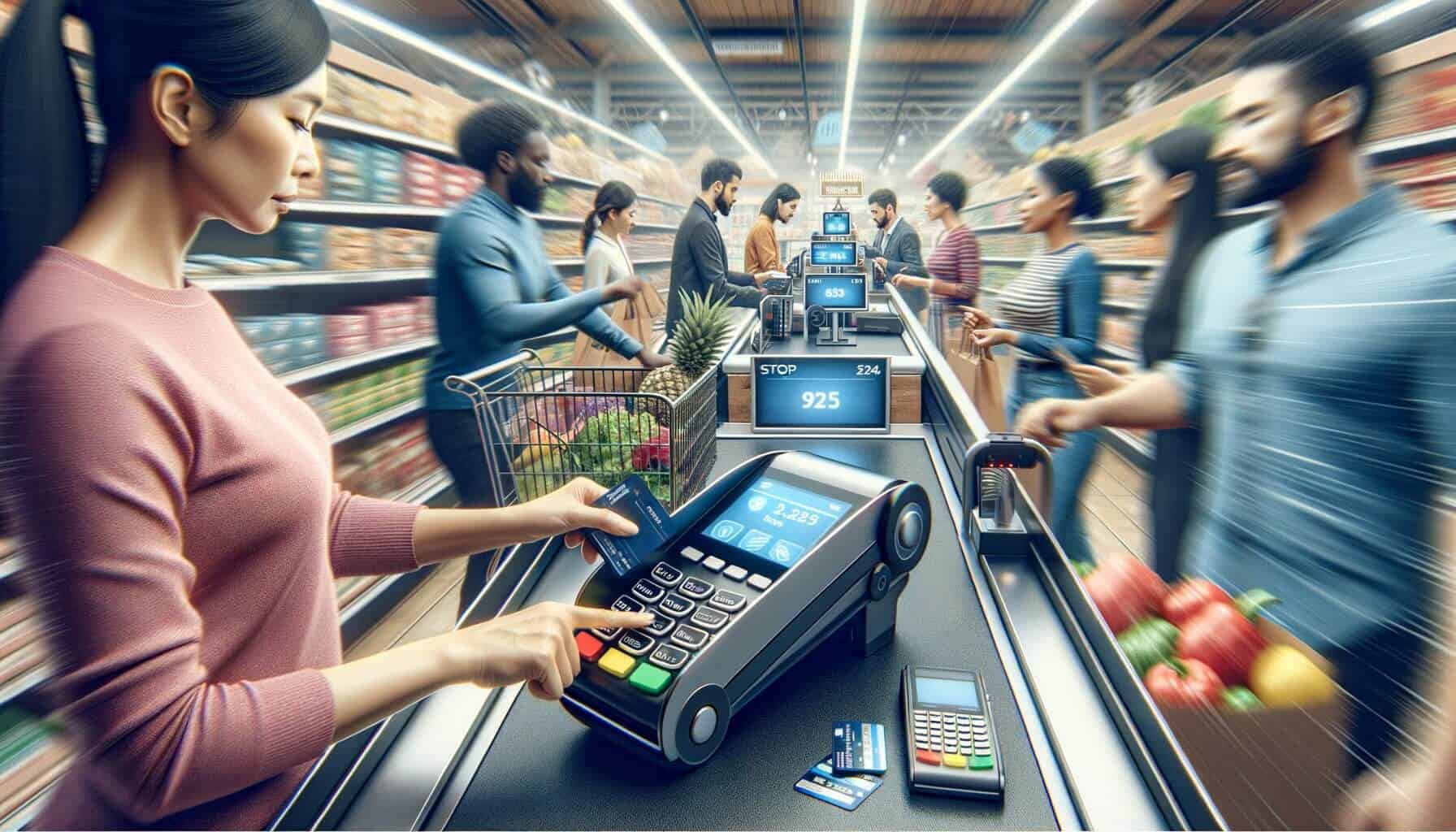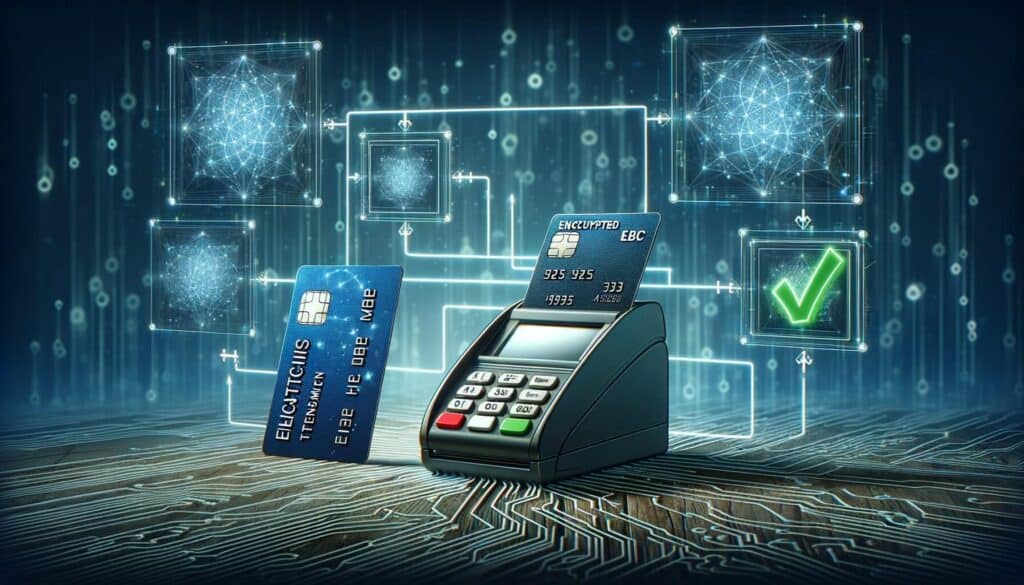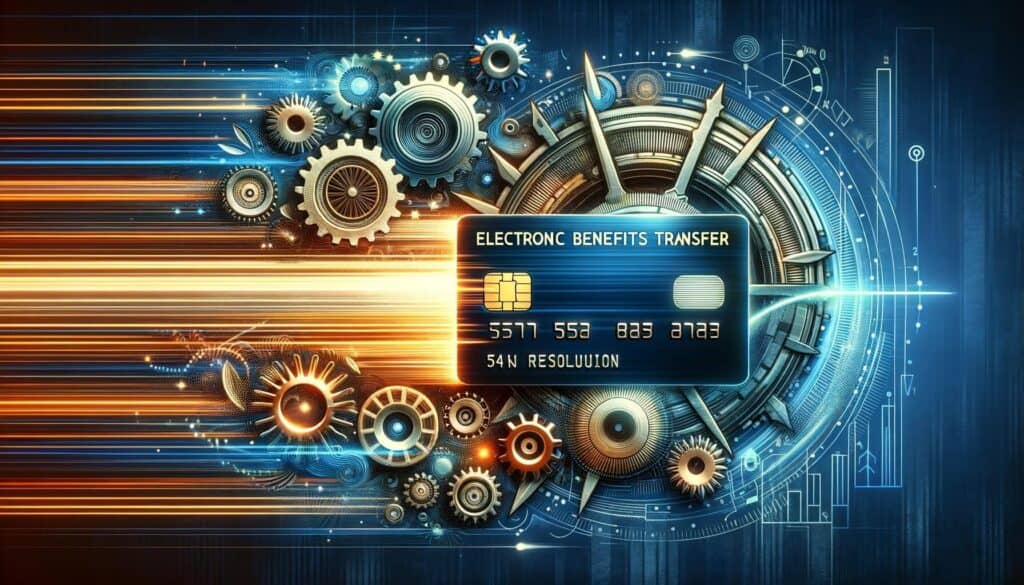
By Sharon Watson April 9, 2025
In today’s fast-paced world, efficiency is key, especially when it comes to transactions at the checkout counter. This holds true for all payment methods, including Electronic Benefit Transfer (EBT) transactions.
EBT is a system that allows recipients of government assistance programs, such as the Supplemental Nutrition Assistance Program (SNAP), to make purchases using a plastic card similar to a debit or credit card. However, EBT transactions can sometimes be time-consuming, leading to longer wait times for customers and potential frustration for both retailers and recipients.
Therefore, it is crucial to find ways to speed up EBT transactions and ensure a smooth checkout process for all parties involved.
How EBT Transactions Work: A Step-by-Step Guide

To understand how to speed up EBT transactions, it is essential to have a clear understanding of how these transactions work. EBT transactions involve several steps, from the initial card swipe to the final approval. Here is a step-by-step guide to the EBT transaction process:
1. Card Swipe: The first step in an EBT transaction is swiping the recipient’s EBT card through the card reader at the checkout counter. This action initiates the transaction and allows the system to recognize the cardholder.
2. PIN Entry: After swiping the card, the recipient is prompted to enter their Personal Identification Number (PIN) on the card reader’s keypad. The PIN serves as a security measure to ensure that only the authorized cardholder can access the benefits.
3. Transaction Authorization: Once the PIN is entered, the card reader sends the transaction details to the EBT system for authorization. The system verifies the recipient’s eligibility and available balance to determine if the transaction can proceed.
4. Approval or Decline: Based on the information received from the EBT system, the card reader displays either an approval or decline message. If approved, the transaction amount is deducted from the recipient’s EBT account, and the retailer receives payment. If declined, the recipient is notified of the insufficient funds or other issues.
5. Receipt Printing: After a successful transaction, the card reader prints a receipt for the recipient, detailing the transaction amount, remaining balance, and other relevant information.
Common Challenges in EBT Transactions and Their Impact on Checkout Speed

Several challenges can slow down EBT transactions, affecting the overall checkout speed. Understanding these challenges is crucial for finding effective solutions. Here are some common challenges in EBT transactions and their impact on checkout speed:
1. Slow Connectivity: EBT transactions rely on a stable and fast internet connection to communicate with the EBT system. Slow connectivity can lead to delays in transaction processing, resulting in longer wait times for customers.
2. Outdated Technology: Some retailers may still be using outdated card readers or software that are not optimized for EBT transactions. These outdated systems can be slower and less efficient, causing delays at the checkout counter.
3. User Error: Incorrectly entered PINs or other user errors can lead to declined transactions, requiring additional attempts and further slowing down the process.
4. Insufficient Training: Cashiers who are not adequately trained in processing EBT transactions may take longer to navigate the system, leading to delays and potential errors.
5. Connectivity Issues with EBT System: Occasionally, the EBT system itself may experience connectivity issues or downtime, preventing transactions from being processed in a timely manner.
Optimizing EBT Transaction Speed: Tips for Retailers

Retailers play a crucial role in speeding up EBT transactions. By implementing certain strategies and best practices, they can streamline the process and reduce checkout times. Here are some tips for retailers to optimize EBT transaction speed:
1. Upgrade Card Readers: Investing in modern card readers that are specifically designed for EBT transactions can significantly improve transaction speed. These readers are equipped with faster processors and better connectivity options, ensuring smoother and quicker transactions.
2. Use Reliable Internet Service Providers: Retailers should ensure they have a reliable and high-speed internet connection to minimize connectivity issues. Working with reputable internet service providers can help ensure a stable connection for EBT transactions.
3. Optimize Software and Systems: Regularly updating and optimizing the software and systems used for EBT transactions is essential. Retailers should work closely with their software providers to ensure they are using the latest versions and taking advantage of any performance enhancements.
4. Implement Queue Management Systems: Queue management systems can help retailers organize and prioritize EBT transactions, reducing wait times for customers. These systems can provide real-time information on transaction status and guide cashiers on the most efficient way to process transactions.
5. Offer Self-Checkout Options: Implementing self-checkout kiosks specifically designed for EBT transactions can help alleviate congestion at the checkout counter. This allows recipients to complete their transactions independently, reducing the workload on cashiers and speeding up the overall process.
6. Opt for Contactless Payments: Contactless payment options, such as Near Field Communication (NFC) or mobile wallets, can expedite EBT transactions. By simply tapping their EBT card or mobile device on a contactless-enabled card reader, recipients can complete transactions quickly and securely.
7. Streamline Product Scanning: Retailers should ensure that their barcode scanners are in good working condition and that cashiers are trained to scan products efficiently. Slow or malfunctioning scanners can significantly slow down the checkout process.
8. Simplify Transaction Verification: Some retailers may have additional verification steps in place for EBT transactions, such as checking photo identification. While these measures are important for security, streamlining the verification process can help speed up transactions without compromising security.
9. Optimize Store Layout: Retailers can optimize their store layout to facilitate faster EBT transactions. Placing EBT-eligible products in easily accessible areas and clearly labeling them can help recipients locate items quickly, reducing the time spent searching for specific products.
10. Monitor Transaction Speed: Retailers should regularly monitor transaction speed and identify any bottlenecks or areas for improvement. By analyzing transaction data, retailers can make informed decisions to optimize the checkout process further.
Streamlining the EBT Application Process for Faster Transactions
While optimizing the checkout process is crucial, streamlining the EBT application process can also contribute to faster transactions. By simplifying and expediting the application process, retailers can ensure that recipients have their EBT cards ready for use when they reach the checkout counter. Here are some strategies to streamline the EBT application process:
1. Provide Clear Application Instructions: Retailers should provide clear and concise instructions on how to apply for EBT benefits. This can include step-by-step guides, online resources, and in-store assistance to help applicants navigate the process efficiently.
2. Offer Application Assistance: Retailers can offer assistance to individuals who may need help completing the EBT application. This can be done through dedicated staff members or partnerships with local organizations that specialize in assisting with government benefit applications.
3. Simplify Documentation Requirements: Retailers can work with local government agencies to simplify the documentation requirements for EBT applications. By reducing the number of documents needed or accepting alternative forms of verification, the application process can be streamlined, resulting in faster approval times.
4. Expedite Application Processing: Retailers can collaborate with government agencies to expedite the processing of EBT applications. This can involve establishing dedicated channels for application submission and processing, ensuring that applications are reviewed and approved promptly.
5. Promote Online Application Options: Encouraging applicants to apply online can significantly speed up the application process. Retailers can provide information on how to access online application portals and offer assistance to those who may not have internet access.
Utilizing Technology to Expedite EBT Transactions
Technology plays a vital role in expediting EBT transactions. By leveraging the right tools and solutions, retailers can streamline the process and reduce checkout times. Here are some ways technology can be utilized to expedite EBT transactions:
1. Mobile EBT Applications: Retailers can develop or partner with mobile application developers to create user-friendly EBT applications. These applications can allow recipients to manage their EBT accounts, check balances, and even initiate transactions directly from their smartphones, reducing the reliance on physical cards and card readers.
2. Electronic Signature Capture: Implementing electronic signature capture technology can eliminate the need for recipients to sign paper receipts, saving time at the checkout counter. This technology allows recipients to sign electronically on the card reader’s screen, ensuring a secure and efficient transaction process.
3. Real-Time Transaction Monitoring: Retailers can utilize real-time transaction monitoring systems to track EBT transactions as they occur. These systems can provide insights into transaction speed, identify potential issues, and allow for immediate action to be taken to resolve any problems.
4. Integration with Inventory Management Systems: Integrating EBT transaction systems with inventory management systems can help retailers streamline the checkout process. By automatically updating inventory levels and product information, cashiers can quickly identify EBT-eligible items and process transactions more efficiently.
5. Mobile Payment Acceptance: Retailers can explore mobile payment acceptance options to expedite EBT transactions. By using mobile card readers or contactless payment solutions, cashiers can process transactions on the go, reducing wait times and increasing customer satisfaction.
Training Cashiers for Efficient EBT Transaction Processing
Proper training for cashiers is crucial for efficient EBT transaction processing. By ensuring that cashiers are well-versed in the EBT system and equipped with the necessary skills, retailers can minimize errors and speed up transactions. Here are some key aspects to consider when training cashiers for efficient EBT transaction processing:
1. EBT System Familiarization: Cashiers should receive comprehensive training on the EBT system, including how to operate the card reader, navigate the user interface, and troubleshoot common issues. This familiarity will enable cashiers to process transactions quickly and confidently.
2. PIN Entry Best Practices: Cashiers should be trained on best practices for PIN entry to minimize errors and declined transactions. This includes reminding recipients to shield their PIN entry from prying eyes and ensuring that the keypad is clean and functioning properly.
3. Efficient Card Swiping Techniques: Proper card swiping techniques can significantly reduce transaction time. Cashiers should be trained to swipe EBT cards smoothly and at the correct angle to ensure accurate card recognition and minimize the need for multiple swipes.
4. Error Handling Procedures: Cashiers should be trained on how to handle common errors that may occur during EBT transactions. This includes understanding error codes, troubleshooting connectivity issues, and knowing when to seek assistance from a supervisor or technical support.
5. Customer Service Skills: Cashiers should receive training in excellent customer service skills to ensure a positive experience for EBT recipients. This includes being friendly, patient, and empathetic, especially during busy periods when wait times may be longer.
6. Efficient Product Scanning Techniques: Cashiers should be trained on efficient product scanning techniques to minimize delays at the checkout counter. This includes proper positioning of products for scanning, using the appropriate scanning speed, and resolving any scanning issues promptly.
7. Transaction Speed Monitoring: Retailers should implement systems to monitor transaction speed and provide feedback to cashiers. This can help identify areas for improvement and allow for targeted training to enhance efficiency.
8. Ongoing Training and Support: EBT transaction processing is an ongoing learning process. Retailers should provide regular training sessions and refresher courses to ensure that cashiers stay up to date with any system updates or changes in procedures.
Enhancing EBT Transaction Security without Compromising Speed
While speed is essential, it is equally important to maintain the security of EBT transactions. Retailers must implement measures to protect sensitive information and prevent fraudulent activities without compromising transaction speed. Here are some ways to enhance EBT transaction security:
1. Encryption and Tokenization: Retailers should ensure that all EBT transactions are encrypted to protect cardholder data. Encryption converts sensitive information into unreadable code, making it difficult for unauthorized individuals to access or decipher the data. Tokenization can also be used to replace sensitive data with unique tokens, further enhancing security.
2. Two-Factor Authentication: Implementing two-factor authentication can add an extra layer of security to EBT transactions. This involves requiring recipients to provide additional verification, such as a one-time password sent to their registered mobile device, in addition to their PIN.
3. Regular Security Audits: Retailers should conduct regular security audits to identify any vulnerabilities in their EBT transaction systems. These audits can help identify potential security risks and allow for timely remediation to prevent unauthorized access or data breaches.
4. Fraud Detection Systems: Implementing fraud detection systems can help identify and prevent fraudulent EBT transactions. These systems use advanced algorithms to analyze transaction patterns and detect any suspicious activities, such as multiple transactions within a short period or unusually high transaction amounts.
5. Employee Training on Security Best Practices: Retailers should provide comprehensive training to employees on security best practices. This includes educating cashiers on how to identify potential fraud indicators, such as altered EBT cards or suspicious behavior from recipients.
6. Secure Network Infrastructure: Retailers should ensure that their network infrastructure is secure and protected from unauthorized access. This includes implementing firewalls, intrusion detection systems, and regular network security updates to prevent data breaches or unauthorized access to EBT transaction data.
7. Compliance with Payment Card Industry Data Security Standards (PCI DSS): Retailers should adhere to the Payment Card Industry Data Security Standards (PCI DSS) to ensure the secure handling of EBT transactions. Compliance with these standards helps protect cardholder data and ensures that retailers are following industry best practices for security.
Overcoming Connectivity Issues for Seamless EBT Transactions
Connectivity issues can significantly impact the speed of EBT transactions. Retailers must be prepared to overcome these challenges to ensure seamless transactions. Here are some strategies to overcome connectivity issues for seamless EBT transactions:
1. Redundant Internet Connections: Retailers can establish redundant internet connections to ensure uninterrupted connectivity for EBT transactions. This can involve having multiple internet service providers or utilizing backup connections, such as cellular data, in case of primary connection failure.
2. Network Load Balancing: Implementing network load balancing can help distribute internet traffic evenly across multiple connections, ensuring optimal performance and minimizing the impact of connectivity issues on EBT transactions.
3. Signal Boosters and Repeaters: In areas with weak or unreliable internet signals, retailers can use signal boosters or repeaters to enhance connectivity. These devices amplify the existing signal, improving internet speed and stability.
4. Mobile Hotspots: Retailers can utilize mobile hotspots as backup internet connections in case of primary connection failure. These devices use cellular data networks to provide internet access, ensuring that EBT transactions can continue even if the primary connection is down.
FAQs
Q.1: How long does it typically take for an EBT transaction to be processed?
Answer: EBT transactions are typically processed within a few seconds, provided there are no connectivity or system issues.
Q.2: Can EBT transactions be made online?
Answer: Yes, some states allow EBT transactions to be made online for eligible items. However, it is important to check with the specific state’s guidelines and authorized retailers.
Q.3: What should I do if my EBT transaction is declined?
Answer: If your EBT transaction is declined, it is recommended to check your available balance and ensure that your EBT card is properly activated and funded. If the issue persists, contacting the EBT customer service helpline can provide further assistance.
Q.4: Can retailers refuse EBT transactions?
Answer: Retailers that are authorized to accept EBT transactions are legally required to accept them. However, there may be limitations on the types of items that can be purchased using EBT funds.
Q.5: Are EBT transactions secure?
Answer: EBT transactions are designed to be secure, with encryption and other security measures in place to protect customer information. However, it is important for retailers to implement additional security measures to further safeguard customer data.
Conclusion
Speeding up EBT transactions at the checkout counter is crucial for both retailers and customers. By understanding the importance of efficiency and implementing strategies to optimize transaction speed, retailers can improve the overall shopping experience and ensure that individuals receive the benefits they need in a timely manner.
From streamlining the application process to utilizing technology and training cashiers, there are various steps that retailers can take to expedite EBT transactions. By prioritizing speed, security, and customer satisfaction, retailers can create a seamless and efficient checkout process for EBT transactions.